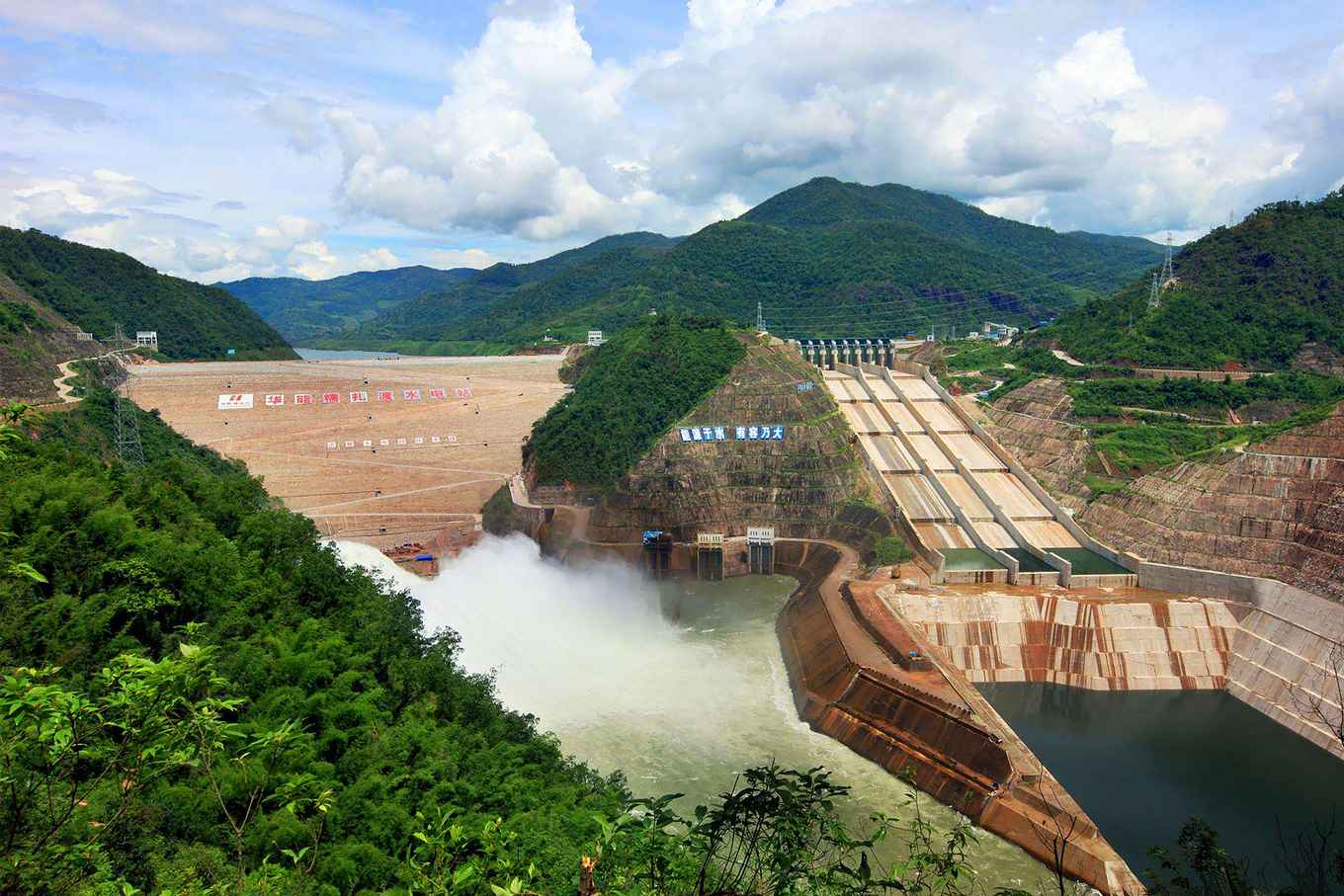Dams in the upper Mekong river transform nutrient release downstream
17 September 2020

The number of hydropower dams has increased dramatically in the last 100 years for energy supply, climate change mitigation, and economic development. However, recent studies have overwhelmingly stressed the negative consequences of dam construction, such as the retainment of nutrients. If nutrients are retained by upstream dams, this may reduce ecosystem productivity and, hence, fisheries downstream.
Upper Mekong River
Solid scientific support for the widespread belief that dams retain nutrients is lacking, however, because monitoring programs collecting data to establish how nutrient fluxes and phytoplankton production have changed after dam construction are rare. A new article by the Nanjing Hydraulic Research Institute, China, together with Prof. Jef Huisman from the University of Amsterdam and Prof. Stephen C. Maberly from UK Centre for Ecology & Hydrology, now provides extensive monitoring data for the upper Mekong River. Their data reveal some surprising new insights.

Reservoirs modify nutrients released downstream
Contrary to expectation, the study shows that a cascade of hydropower reservoirs along the upper Mekong River did not retain nitrogen and phosphorus. This is caused by the increased residence time of water in the stagnant reservoirs, which favors vertical stratification of different water masses. Vertical stratification results in low oxygen concentrations in the deeper water layers and the sediment. The lack of oxygen stimulates accumulation of organic matter, release of phosphorus from the sediment and accumulation of nitrogen in the form of ammonium in the deeper water layers of the reservoir. As a consequence, water released from the base of the reservoirs contains relatively high concentrations of bioavailable nitrogen and phosphorus.
Moreover, the longer residence time in the reservoirs strongly increased phytoplankton production, with a shift in species composition from diatoms (single-celled algae) upstream to green algae in the downstream reservoirs. ‘In contrast to nitrogen and phosphorus, silica is retained by the reservoirs. As a consequence, diatoms that need silica for their growth are replaced by green algae and other phytoplankton species that benefit from the high bioavailability of nitrogen and phosphorus downstream,’ explains Professor Jef Huisman, of the Institute for Biodiversity and Ecosystem Dynamics of the University of Amsterdam.
Fisheries
Hydropower dams in the upper Mekong River are regularly blamed for nutrient retention and consequently the collapse of primary productivity and fisheries in the lower Mekong River, causing tension between China and other countries downstream. This work implies that the fishery decline in the lower Mekong River should be attributed to other factors rather than a reduction in nutrient availability. The dams may still affect fish populations, because of e.g. changes in flooding regimes or disruption of fish migration. Also, the decline in fisheries may involve other changes that have taken place downstream such as over-fishing or water quality deterioration.
This novel perspective emphasizes the need for dedicated monitoring of the environmental impacts of hydropower dams on nutrient cycling and primary production. Huisman: ‘The findings are of great significance not only for science, but also for sustainable social-economic development along the Mekong River and other transboundary rivers worldwide.’
Publication details
Qiuwen Chen, Wenqing Shi, Jef Huisman, Stephen C. Maberly, Jianyun Zhang, Juhua Yu, Yuchen Chen, Daniele Tonina, Qitao Yi: ‘Hydropower reservoirs on the upper Mekong River modify nutrient bioavailability downstream,’ in National Science Review 7: 1449-1457 (2020). Link: https://doi.org/10.1093/nsr/nwaa026